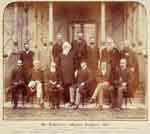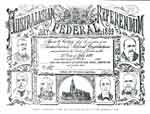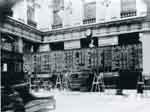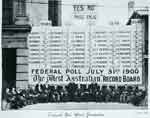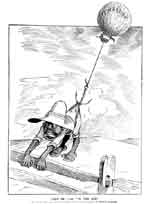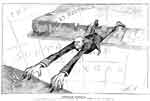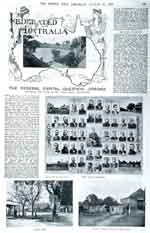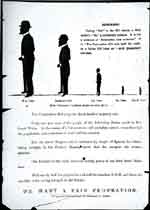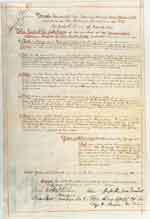 |
| Home | Working Man's Paradise? | Socialist Orator | From Revolutionary To Federal Politician | National Leader | ||
|
THE
PROCESS The actual mechanism used was a series of Federation Conferences over a period of ten years. During these conferences, the colonial premiers debated the issues involved and arrived at a number of agreements that they then had to 'sell' back to their states. In order to involve the voters a number of referenda were used. The first one, in 1888, narrowly returned a no vote for Federation, sending the premiers back to the discussion table. The second referendum, in 1899, returned a yes vote, making it possible to begin the political process of getting Britain to grant independence. Once this was done, Australia was free to form its own national government. THE ISSUES The location of the capital was one contentious issue, as both Sydney and Melbourne claimed to be the most important city in Australia. The solution was to build a new capital half way between the two. Another important issue was the question of political suffrage - who would have a right to vote. Some states were more liberal than others in this question. South Australia, for example, had already granted the vote to women and to Aboriginal people. While South Australian women kept their right to vote and indeed this was extended to all Australian women, Aboriginal people lost the right to vote. This was only rectified in the 1967 referendum. |
"The Australasian Federation Conference", 1890. By permission of the National Library of Australia Voters certificate, electors of Victoria, Australian Federal Constitution. Held on 27th day of July 1899. Supplement to the Argus 21 July 1899. By permission of the National Library of Australia. "Australian Federation Referendum Results" 1899. By permission of the National Library of Australia, "Western Australia's Federal Poll", 31 July 1900. By permission of the National Library of Australia. Livingston Hopkins, "More or less 'In the air'", Bulletin, 29 January 1898, p.5. By permission of the National Library of Australia. |
Livingston Hopkins, "Westralian Separation", Bulletin, 24 February 1900, p.16. Courtesy of the University of Western Australia Library "Federal Capital Question", Corowa, NSW, 1899. By permission of the National Library of Australia. "We want a fair federation", Government poster. By Permission of the National Library of Australia. "Petition by the Womanhood Suffrage League of NSW to the Australasian Federal Convention". Courtesy of the National Archives of Australia. |
